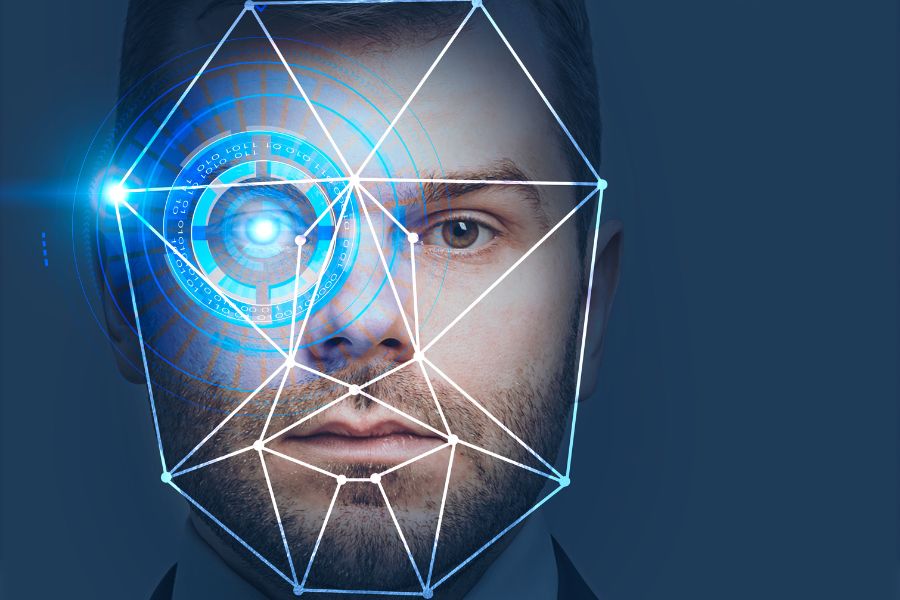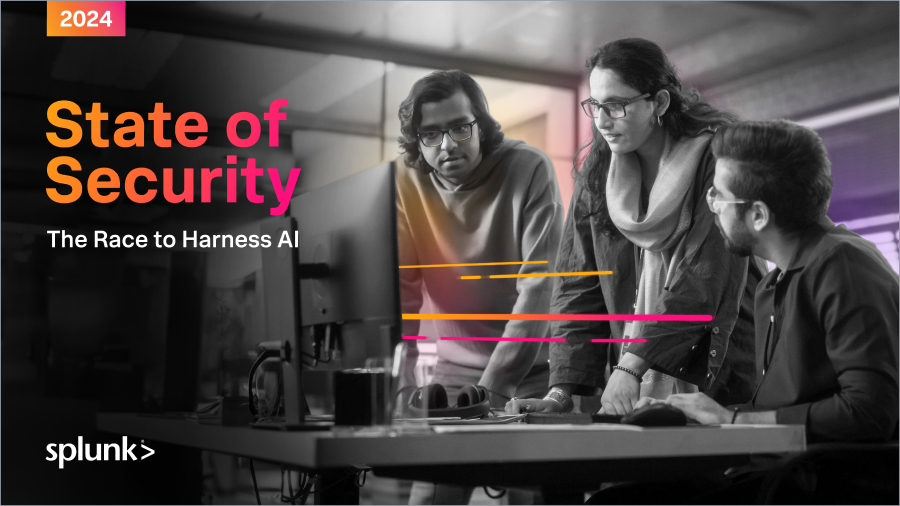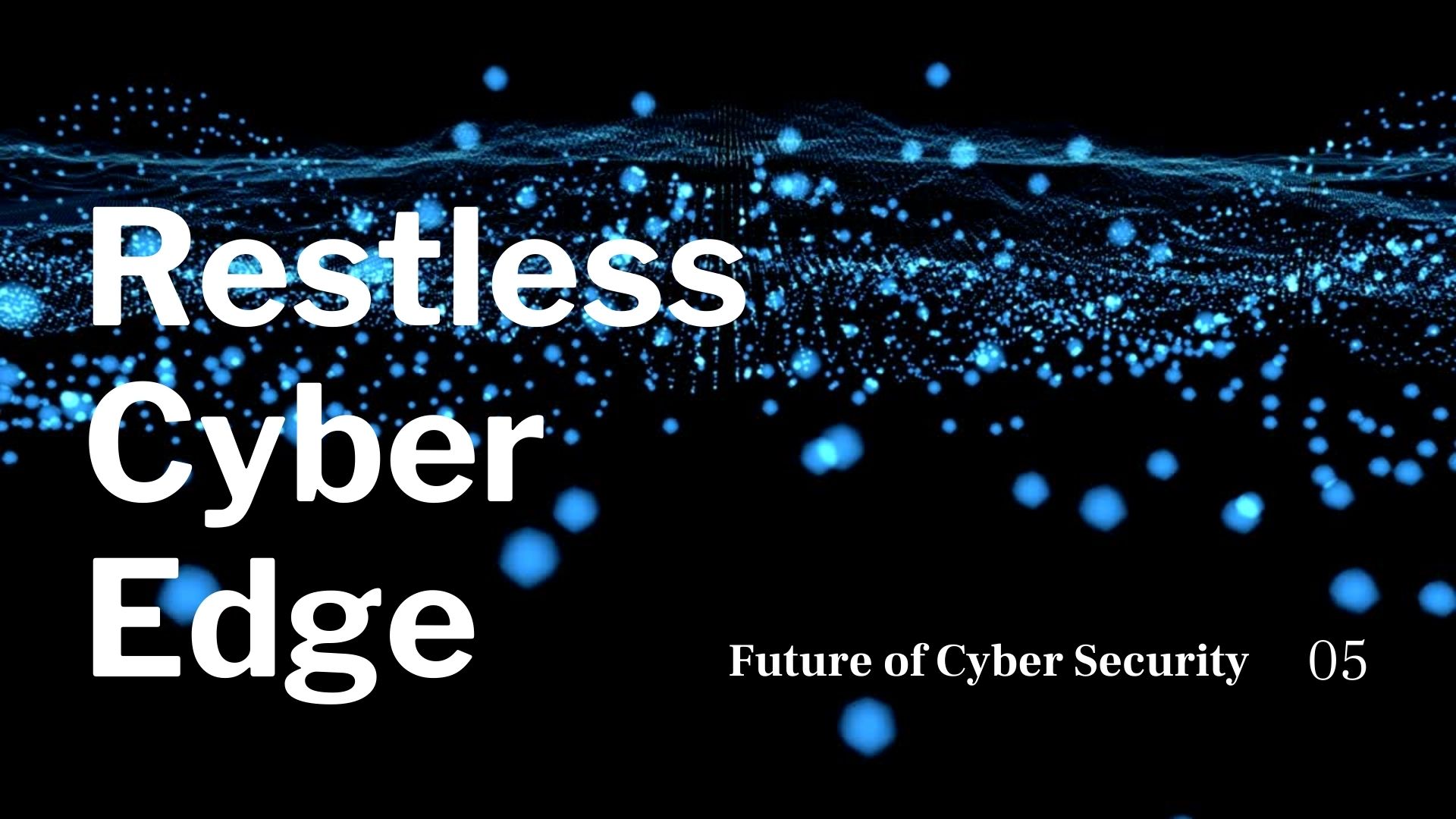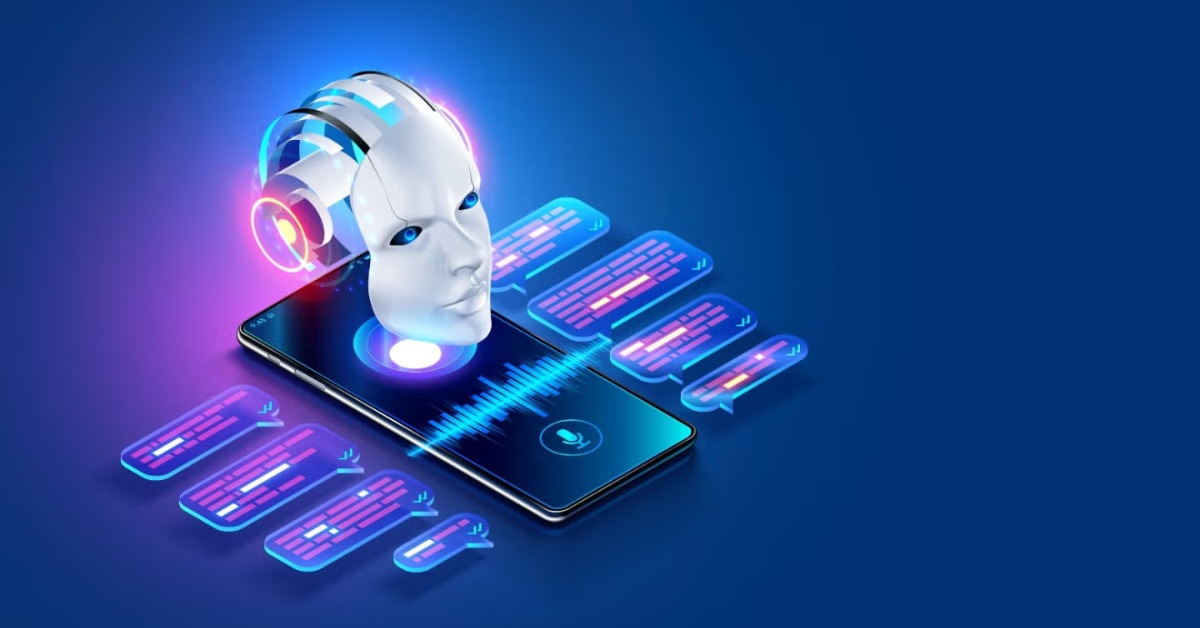Best Facial Recognition Companies in 2025
May 25, 2023, 18 min read
In today’s world, keeping our information safe is a big deal. That’s where facial recognition tech comes in. It’s like a high-tech ID card that uses your unique face features to check if you’re really you. But with so many companies offering this tech, it’s important to know who’s really good at it. Biometric ID, like fingerprints or face scans, has become super popular for keeping things secure. And get this: experts predict the facial recognition market will keep growing fast, like 15.4% every year from 2021 to 2028, reaching a huge $3.86 billion in 2020. With tech improving so fast, it’s exciting to see which companies are leading the way in this digital ID revolution. In this article we will introduce you to the top facial recognition companies of 2025.
Best Facial Recognition Companies in 2025
Facial recognition software powered by AI is now widely used in various modern applications (AI). Now, let’s look at the thirty leading firms utilizing this tech to create ID-verifying facial recognition software.
Developed by FDNA, a U.S.-based AI firm, created the Face2Gene health app. The app’s user interface is tailored to the needs of medical professionals, facilitating quick and accurate diagnosis of genetic disorders and their variants. With the help of deep learning algorithms, the FDNA app can take a patient photo and convert it into mathematical facial descriptors that can then be compared to syndrome-specific computational-based classifiers to quantify the degree of similarity.
As a result, a ranked list of syndromes with a shared morphology is produced. For feature annotation and syndrome prioritization, the technology’s AI also suggests genes and phenotypic traits that are likely to be involved.
Cognitec provides worldwide face recognition applications and technologies through biometric software and hardware solutions. The company offers FaceVACS-based face recognition systems that are flexible and easy to use. The open system architecture and expert support that come standard with all of Cognitec’s solutions make them easy to implement.
Lenso.ai is a reverse image search platform that, among other features, offers advanced face search capabilities. It enables users to efficiently find face matches across a vast and continuously updated index. Lenso.ai’s technology is built to serve everyone, not only specific industries, where security and seamless authentication are critical. By analyzing key facial features, Lenso.ai performs face searches with accuracy, even in images with different angles, lighting conditions, and resolutions.
One of Lenso.ai’s standout features is its privacy-first approach—offering robust and compliance with global data protection standards like GDPR. In this platform, with keyword and domain filter options, you can refine and narrow your search for more precise results. The platform’s sorting options also help you quickly find the best possible match for your image. Powered by advanced AI technology, lenso.ai enables you to track where images of specific individuals appear online or verify if your own images have been misused. Lenso.ai doesn’t disappoint you in frictionless, AI-driven identity verification.
Some technologies that Sensory creates and licenses include speech recognition, NLP, f/v biometrics, wake words, CV, and sound identification. Sensory’s Truly Secure platform is an algorithm that is developed in-house that uses the company’s formidable capabilities in speech processing, computer vision, and machine learning to verify speakers and identify faces.
The improved method can identify users even when they don’t wear masks and pick up on bodily noises like sneezes and coughs.
Trueface AI is a leading provider of facial recognition and computer vision solutions. Its advanced technology harnesses the power of machine learning and artificial intelligence to transform camera data into actionable intelligence. With its suite of SDKs and container solutions, Trueface AI allows businesses to quickly deploy facial recognition, age verification, and weapon detection technologies, creating safer and smarter environments for their customers, employees, and guests.
Blippar, founded in 2011, is an industry pioneer in the field of Augmented Reality (AR) with the mission of democratizing AR. It is an app that uses a smartphone’s camera to identify photos and physical objects. The app can superimpose digitally created content through augmented reality for users to enjoy and interact with.
The app allows users to scan their environment and provide helpful information. If you want to learn more about something specific, you must check it with the app, and Blippar will show you everything there is to know about it. Biometric authentication from iProov, a cyber security firm based in London, is highly secure, private, and user-friendly. It sees extensive use in various government and public-sector contexts, as well as in the finance and identity tech industries, as well as the tourism and hospitality sectors.
iProov’s Face Verifier is a web-based authentication service that checks a user’s face against a stored biometric template. With iProov, users can quickly and easily verify their identities online with a simple face scan, eliminating the need for cumbersome and insecure passwords or one-time passwords (OTPs). Depending on your needs, IProov can serve as a primary, multi-factor, or supplementary authentication method.
Chinese software company Megvii specializes in image recognition and deep learning; its flagship product, Face++, is the world’s most popular open-source computer vision platform.
Face++ can identify and evaluate 106 human face features with its cutting-edge biometric technology. Numerous SDKs (software development kits) for languages like PHP, Java, Python, iOS, and Ruby are supported. Therefore, law enforcement widely uses technology to apprehend criminals and examine CCTV networks in urban areas. Regarding third-party authentication software, Megvii is by far the industry leader.
New York City-based Clarifai is an artificial intelligence firm focusing on computer vision and robotic machine learning (ML). Various sectors, including financial, retail, and government organizations, use the company’s software to protect people from thefts and robberies.
Its technology can automatically identify faces from any perspective using landmarks and alignment.
OneSpan’s Digipass is a biometric two-factor authentication platform that protects mobile devices from hackers using a user’s fingerprint or face. These capabilities allow users to scan a QR code directly from the website they intend to use with OneSpan. The next step is to use the device’s camera to conduct a facial scan. The app uses machine learning algorithms to compare the scan to the saved biometric template.
DigiPass for Apps is a paid add-on for iOS, Android, Windows, and Linux devices. The technology can be integrated into existing programs to improve data protection. There is solid evidence that Digipass authenticators can thwart hacking attempts, making them a reliable first line of defense.
Valid Key, created by McAfee Security, is a biometric password manager that recognizes users with unique identifiers such as faces or fingerprints. It uses AES-256 encryption and multi-factor authentication to secure user data to prevent unauthorized access.
Valid Key uses the industry-leading AES-256 algorithm for encryption, making it impossible for anyone but the authorized user to decrypt any encrypted data.
Kairos offers its customers an SDK, enabling them to integrate a Facial Recognition System (FRS) into their existing systems with a simplified verification process. This cutting-edge technology enhances security and serves as a robust authentication method for businesses. With Kairos’s FRS, businesses can leverage advanced facial recognition capabilities such as age and gender detection and the ability to identify multiple faces within large groups or audiences.
Kairos’ FRS is an ideal choice for businesses prioritizing user privacy concerns. The company is committed to maintaining an ethical approach to facial recognition, ensuring customer privacy protection. By choosing Kairos, businesses can confidently implement this technology while upholding privacy standards and regulations.
Amazon Rekognition empowers your business and development teams to effortlessly tackle your most challenging computer vision tasks without needing machine learning expertise. Plus, it is more affordable, making it accessible for all your projects and goals.
Amazon Rekognition offers a wide range of features for efficient image and video analysis
- Pre-trained and customizable computer vision capabilities.
- Content moderation to detect inappropriate or unsafe content.
- Face detection and analysis, including face comparison and verification.
- Text detection for extracting text from images and videos.
- Celebrity recognition for identifying well-known individuals.
- Custom labels for detecting specific objects using automated machine learning.
- Video segment detection to identify key segments in videos.
Use cases include detecting inappropriate content, verifying identity online, and streamlining media analysis. Customers like Pinterest, PBS, and SDG&E have benefited from Rekognition in various applications.
SkyBiometry offers cutting-edge face recognition and detection cloud biometrics API, enabling developers and marketers to achieve more with less effort. Their API allows for seamless integration into custom projects and facilitates the execution of personalized demands such as face grouping.
SkyBiometry’s fast and accurate detection and identification technologies are used in various sectors, such as traditional biometric identification systems, security, time management, entertainment, games, online marketing, social media, and mobile applications.
SenseTime is the premier AI software company dedicated to pioneering a brighter future through innovation. The mission revolves around advancing AI research to develop scalable, affordable software platforms that benefit businesses, individuals, and society. They prioritize attracting and nurturing top talents to shape the future collaboratively.
With their origins in academia, they heavily invest in original and cutting-edge research. This investment allows them to continually enhance their industry-leading AI capabilities across various fields such as perception intelligence, natural language processing, decision intelligence, and AI-enabled content generation. Additionally, they excel in AI chip technology, sensors, and computing infrastructure.
Betaface facial recognition suite offers a wide range of complex operations, from fundamental face detection through face recognition (identification, verification, or 1:1, 1:N matching) to biometric measurements, face analysis, face and facial features tracking on video, age, gender, ethnicity, and emotion recognition, skin, hair, and clothes color detection, hairstyle shape analysis, and facial features shape description.
Thir technology is used by video and image archives, web advertising and entertainment projects, media content producers, video surveillance and security software solutions, end users and b2b software developers, and others.
Luxand, Inc., established in 2005, specializes in AI and biometric identification technologies. Its solutions are used globally in sectors such as biometric identification, security, banking, entertainment, and the medical and cosmetic industries.
Luxand’s research lab pioneers advanced technologies, including creating realistic 3D models from facial images. These technologies have been referenced in over 200 academic papers. Luxand serves many clients, including Universal Pictures, Samsung, LG, Boeing, and government agencies. Its products are available worldwide through a network of partners.
NEC is a global leader in biometric authentication technology, offering solutions such as fingerprint recognition, palmprint recognition, face recognition, iris recognition, voice recognition, and ear acoustic authentication. These technologies, grouped under the “Bio-IDiom” brand, ensure secure access to digital content, addressing the growing risks associated with impersonation in the digital age. With a legacy dating back to the 1970s, NEC’s highly accurate biometric solutions are deployed worldwide, contributing to a safer and more secure digital environment.
Paravision provides an extensive face recognition product suite equipped with industry-leading development tools for constructing and implementing vital biometric verification and identification solutions across various applications and use cases.
Paravision’s face recognition software consistently achieves top rankings in NIST FRTE (previously FRVT) benchmarks, encompassing 1:1 Verification, 1:N Identification, and Paperless Travel categories.
Oz Liveness is a premier facial recognition and authentication software trusted by private and public organizations globally to mitigate biometric fraud risks by thwarting deepfake and spoofing attacks with unparalleled accuracy, validated by the industry’s gold standard, ISO 30107 certification.
Benefits Oz Liveness
-
- Drive digital transformation: Establish a seamlessly automated digital experience for your employees, clients, and partners by facilitating flawless facial recognition across all devices.
- Combat fraud and minimize risks: Embrace award-winning human liveness verification algorithms to enhance security measures.
- Enhance flexibility and efficiency: Benefit from SaaS and on-premise deployment options with a one-day setup timeline, saving valuable time.
- Expand your reach: Quickly onboard remote customers in just one second, multiplying your business potential.
- Boost business growth: Experience heightened customer conversion rates and drive overall business expansion.
FaceFirst is a leading provider of facial recognition technology, specializing in security and surveillance applications. The company is headquartered in Los Angeles, California, and has established itself as a key player in the biometric security industry, offering scalable, enterprise-grade solutions designed to enhance public safety and operational efficiency.
Technology and Solutions
FaceFirst leverages advanced AI and machine learning algorithms to deliver highly accurate and fast facial recognition capabilities. Their technology is designed to integrate seamlessly with existing security systems, providing real-time alerts and actionable intelligence. Key features of FaceFirst’s solutions include:
- Real-time Identification: The system can quickly identify individuals in real-time, even in crowded or dynamic environments, making it ideal for use in airports, retail stores, stadiums, and other public spaces.
- High Accuracy: Utilizing deep learning models, FaceFirst’s technology ensures high accuracy in facial recognition, capable of identifying individuals with various facial expressions, lighting conditions, and angles.
- Scalability: FaceFirst’s solutions are highly scalable, allowing them to be deployed across multiple locations and integrated with various camera systems and databases.
- Privacy and Security: The company places a strong emphasis on data security and privacy, ensuring that facial recognition data is encrypted and complies with relevant regulations and standards.
DeepVision AI is a cutting-edge company specializing in artificial intelligence and computer vision technologies. The company focuses on leveraging advanced AI algorithms to deliver powerful image and video analysis solutions, including facial recognition. DeepVision AI is dedicated to transforming how businesses and organizations analyze visual data to make informed decisions and enhance security.
Applications
DeepVision AI’s technology is utilized across a range of industries, offering diverse applications such as:
- Security and Surveillance: Enhancing public and private security by enabling real-time facial recognition and behavior analysis to identify potential threats and ensure safety.
- Retail and Marketing: Analyzing customer behavior, demographics, and engagement to optimize store layouts, product placements, and marketing strategies.
- Smart Cities: Contributing to the development of smart city initiatives by providing advanced monitoring and analysis tools for urban management and public safety.
- Healthcare: Assisting in patient identification, monitoring, and management to improve healthcare services and operational efficiency.
Microsoft Azure Face is a comprehensive facial recognition service offered as part of Microsoft’s Azure Cognitive Services suite. Designed to provide developers with powerful tools to build and integrate facial recognition capabilities into their applications, Azure Face leverages advanced AI and machine learning technologies to deliver high accuracy and reliability. This service is ideal for businesses and organizations looking to enhance their security, customer experiences, and operational efficiencies through facial recognition.
Integration and Scalability
One of the strengths of Azure Face is its seamless integration with other Azure services and existing IT infrastructure. Developers can easily incorporate facial recognition capabilities into their applications using REST APIs and SDKs for various programming languages. The service is designed to scale with the needs of the organization, making it suitable for both small-scale projects and large enterprise deployments.
Privacy and Compliance
Microsoft places a strong emphasis on privacy and compliance, ensuring that Azure Face adheres to stringent data protection standards. The service includes features to manage data responsibly, such as data encryption, user consent mechanisms, and robust access controls. Azure Face complies with various regulations, including GDPR, to ensure the ethical use of facial recognition technology.
CaraCom is an innovative company specializing in facial recognition technology and biometric solutions. The company focuses on delivering cutting-edge products and services designed to enhance security, streamline operations, and improve user experiences across various industries. CaraCom’s solutions are known for their accuracy, reliability, and ease of integration, making them a preferred choice for businesses and organizations seeking advanced facial recognition capabilities.
BioID, a German biometrics company, offers device-independent facial recognition services via API, enabling seamless integration across various platforms. Their technology emphasizes user privacy, transforming facial characteristics into encrypted templates and ensuring GDPR compliance. With built-in liveness detection, BioID’s solutions effectively prevent spoofing attempts, providing secure and reliable user authentication.
NEC Corporation, headquartered in Japan, is a prominent player in the facial recognition market. The company has developed advanced facial recognition systems designed to provide secure access to buildings, airports, and other public spaces. NEC’s technology is recognized for its high accuracy and has been implemented in various security applications worldwide.
Daon Inc., based in Ireland, is a leading provider of biometric authentication and identity assurance solutions. The company’s facial recognition technology is utilized in various sectors, including banking and government services, to enhance security and user experience. Daon’s solutions are designed to provide seamless and secure identity verification for a wide range of applications.
FacePhi Biometria, headquartered in Spain, specializes in facial recognition technology for the financial sector. Their solutions are designed to enhance security and user experience in banking applications, providing seamless and secure identity verification. FacePhi’s technology is recognized for its high accuracy and compliance with international security standards.
Animetrics Inc., based in the United States, offers advanced 3D facial recognition solutions tailored for law enforcement and security applications. Their technology enhances identity verification processes, providing robust tools for agencies worldwide. Animetrics’ solutions are designed to deliver high accuracy and reliability in various security scenarios.
AnyVision, an Israel-based company, is a prominent player in the facial recognition market. Their technology is designed to provide secure and efficient identity verification across various sectors, including security and retail. AnyVision’s solutions are recognized for their high accuracy and real-time processing capabilities.
Which Method Is Best for Face Recognition?
Choosing the best method for face recognition depends on the specific requirements of the application, including accuracy, speed, scalability, and privacy considerations. Here are some of the most widely used face recognition methods, each with its strengths and weaknesses:
Traditional Algorithms
Traditional face recognition methods include techniques like Eigenfaces, Fisherfaces, and Local Binary Patterns (LBP). These algorithms extract facial features from images and compare them to stored templates.
Eigenfaces: Uses Principal Component Analysis (PCA) to reduce the dimensionality of facial data, focusing on the features that best distinguish faces. It’s relatively simple and fast but can be less accurate under varying lighting conditions or facial expressions.
Fisherfaces: Applies Linear Discriminant Analysis (LDA) to maximize the ratio of between-class variance to within-class variance in facial features. This method improves recognition rates compared to Eigenfaces but can still struggle with changes in lighting and pose.
Local Binary Patterns (LBP): Analyzes local features of the face by comparing pixel values and encoding them as binary patterns. LBP is robust to changes in lighting but may not perform as well with large variations in facial expressions or angles.
Deep Learning Models
Deep learning has revolutionized face recognition, offering higher accuracy and robustness. Convolutional Neural Networks (CNNs) are particularly effective for this task.
DeepFace: Developed by Facebook, this deep learning model uses a nine-layer neural network to achieve high accuracy in face recognition. It’s known for its robustness to variations in lighting, facial expressions, and angles.
FaceNet: Created by Google, FaceNet maps faces into a compact Euclidean space where the distance between embeddings corresponds to the similarity of the faces. It achieves state-of-the-art accuracy and is highly scalable for large datasets.
VGG-Face: Uses the VGG-16 architecture to perform face recognition tasks. It provides high accuracy and generalizes well to different face recognition scenarios, though it can be computationally intensive.
Hybrid Approaches
Combining traditional methods with deep learning can leverage the strengths of both approaches. For example, combining LBP with CNNs can improve performance in scenarios with limited training data or when computational resources are constrained.
3D Face Recognition
3D face recognition techniques use depth data to create a three-dimensional model of the face. This method can be more accurate than 2D approaches, especially under varying lighting conditions and facial expressions. However, it requires specialized hardware like 3D cameras, which can be expensive and less practical for widespread use.
Infrared Face Recognition
Infrared (IR) face recognition captures facial images using infrared light, which is less affected by lighting conditions and can capture unique features like vein patterns. This method is highly accurate in diverse environments but requires IR cameras, adding to the cost and complexity.
How will companies achieve more in this sector?
The rapid evolution of facial recognition technology is driven by innovative breakthroughs that are enhancing its functionality, security, and ethical use. These advancements are transforming how the technology is applied across industries. Here are some key innovations shaping the future of facial recognition:
- Privacy-Preserving Technologies: Techniques like federated learning enable algorithms to train on decentralized data, ensuring individual privacy remains intact. This addresses growing concerns over the security of biometric information, making facial recognition safer for users and businesses alike.
- Context-Aware Recognition Systems: New systems are designed to adapt to challenging conditions, such as recognizing faces in low light or amidst crowded settings. These models use advanced AI trained on diverse datasets, significantly improving their reliability in real-world scenarios.
- Ethical AI Frameworks: Developers are adopting ethical AI principles to reduce algorithmic bias, ensuring that facial recognition works equitably across different demographic groups. This innovation is vital for applications in law enforcement, border control, and financial security.
- Integration with Multi-Modal Systems Facial recognition is increasingly being paired with other biometric technologies, such as voice or gait recognition, to create multi-layered security systems. This integration enhances accuracy and reduces the risk of false positives or negatives.
- Real-Time Edge Computing: By leveraging edge computing, facial recognition systems can process data locally on devices instead of relying on cloud infrastructure. This reduces latency and enhances security, particularly for applications in IoT devices and autonomous systems.
These innovations are paving the way for a future where facial recognition technology is not only more accurate and versatile but also safer and more aligned with ethical standards. As the field advances, these developments will define its role in creating secure and inclusive digital ecosystems.
Conclusion
The best method for face recognition depends on your specific needs. For applications requiring high accuracy and robustness, deep learning models like FaceNet or DeepFace are ideal. If computational resources are limited, traditional methods like LBP can offer a good balance between performance and efficiency. For scenarios demanding high security and resistance to spoofing, 3D or infrared face recognition methods may be the best choice.
Ultimately, the choice of method should align with the specific requirements and constraints of your application, including accuracy, speed, scalability, and cost. By carefully evaluating these factors, you can select the most suitable face recognition method for your needs.
How Accurate is the best Face Recognition?
The accuracy of facial recognition technology can vary depending on various factors, including the specific algorithms and models used, the quality of the input data (such as image resolution and lighting conditions), and the deployment environment.
State-of-the-art facial recognition systems developed by reputable companies and research institutions can achieve high accuracy rates, often surpassing human performance in specific scenarios. These systems leverage deep learning algorithms and advanced techniques to analyze and compare facial features, enabling them to identify individuals with high accuracy.
However, it’s important to note that no facial recognition system is perfect, and limitations and challenges can exist. Factors such as variations in pose, expression, lighting, and image quality can impact accuracy. Additionally, the performance of facial recognition systems can be influenced by demographic biases and diversity in the dataset used for training.
To assess the accuracy of a specific facial recognition system, it is advisable to refer to independent evaluations, benchmarks, and studies conducted by organizations or researchers specializing in this field. These evaluations often provide insights into the performance and limitations of different systems and can help inform decision-making when selecting and deploying facial recognition technology.
How Do You Choose the Best Facial Recognition Software?
In the evolving world of facial recognition technology, staying updated on the leading companies is crucial. This blog summarizes the best facial recognition companies in 2025, highlighting their innovative solutions, industry reputation, and contributions to the field. Whether you’re a business seeking reliable facial recognition technology or an individual interested in the latest advancements, this sum-up will guide you in choosing the most prominent players in the industry.
The Latest Technology: Explore the companies at the forefront of facial recognition technology, leveraging state-of-the-art algorithms, artificial intelligence, and machine learning to deliver accurate and efficient solutions.
Industry Recognition: Discover the companies that have received industry recognition and accolades for their advancements in facial recognition technology. Learn about their contributions to enhancing security, streamlining operations, and improving user experiences.
Diverse Applications: Gain insights into the various sectors where facial recognition technology is making a significant impact. From law enforcement and public safety to retail, healthcare, and beyond, these companies are revolutionizing facial recognition.
Privacy and Ethical Considerations: Understand how these companies address privacy concerns and prioritize ethical practices in their facial recognition solutions. Learn about their commitment to data protection, transparency, and responsible use of the technology.
Customer Success Stories: Dive into real-world examples and case studies highlighting successful deployments of facial recognition technology by these leading companies. Discover how their solutions have helped businesses and organizations achieve their goals and overcome challenges.
Sum-Up
As the demand for facial recognition technology continues to rise, being aware of the best companies in the industry is essential. There are also free software providers, but you must research properly to avoid mistakes. This sum-up provides an overview of the top facial recognition companies in 2025. It also offers valuable insights into their technological advancements, industry recognition, diverse applications, privacy considerations, and customer success stories. Stay informed and make informed decisions as you navigate the ever-growing landscape of facial recognition technology.
To get started, connect with an expert or explore customer stories of each facial recognition companies abowe!




























